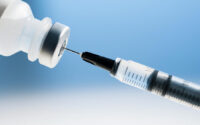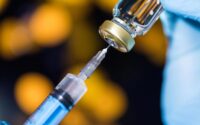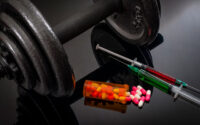Drostanolone Propionate
 Drostanolone Propionate: An In-depth Look at Its History, Mechanisms, and Multifaceted Applications
Drostanolone Propionate: An In-depth Look at Its History, Mechanisms, and Multifaceted Applications
Drostanolone Propionate or Masteron, stands as a fascinating and complex agent within the realm of synthetic androgens. Developed initially in the late 1950s. Its journey from a medical treatment to a favored anabolic steroid among athletes and bodybuilders showcases a multifaceted evolution. This essay aims to elucidate – diverse applications, both in medical settings and within the realm of sports and body enhancement.
The inception of Drostanolone Propionate traces back to 1959. Its developer, Syntex, sought to exploit the compound’s unique attributes for therapeutic purposes. Initially, the compound garnered attention for its potential in medical treatments, leading to its approval for use in managing advanced inoperable breast cancer.
Mechanistically
Drostanolone Propionate exhibits its effects through multiple pathways. As a derivative of dihydrotestosterone (DHT), it inherits a strong affinity for androgen receptors, binding more strongly than testosterone itself. This strong androgen receptor binding is fundamental to its actions, contributing to its increased androgenic effects. Unlike many anabolic steroids, it is not subject to conversion into estrogen. This characteristic mitigates estrogenic side effects, such as water retention and gynecomastia.
Therapeutic contexts
Drostanolone Propionate’s utilization has extended beyond breast cancer treatment, albeit in a more limited capacity compared to other anabolic steroids.Its potent anti-estrogenic effects, combined with its favorable anabolic to androgenic ratio, meant it was explored for applications such as addressing muscle wasting diseases. In medical treatments has waned over the years, supplanted by more modern treatments with better efficacy and safety profiles.
In the realm of athletics and bodybuilding, Drostanolone Propionate has carved out a niche for itself. Its ability to enhance lean muscle mass, increase strength, and improve muscle hardness and density without significant water retention has made it a popular choice. Its properties are particularly prized in the lead-up to competitions, where it is often used in cutting cycles to help preserve muscle mass, reducing body fat.
Ethical and health considerations, however, cast a long shadow over the non-therapeutic use of Drostanolone Propionate. While its performance-enhancing benefits are undeniable, the potential for adverse effects looms large. Issues such as cardiovascular strain, negative effects on lipid profiles, potential liver toxicity. Moreover, its classification as a prohibited substance by many sports governing bodies, including the World Anti-Doping Agency (WADA), underscores the ethical dilemmas.
Conclusion
Drostanolone Propionate represents a compound of great complexity and contradictions. From its origins as a potential therapeutic agent to its adoption by the athletic and bodybuilding communities, its journey reflects broader narratives around the development, use, and regulation of performance-enhancing drugs. Its pharmacological profile offers valuable insights into the mechanisms of androgen action, while its applications highlight ongoing debates over ethical, health, and regulatory issues in sports and medicine. The story of Drostanolone Propionate remains a compelling chapter in the ever-unfolding saga of human enhancement.


